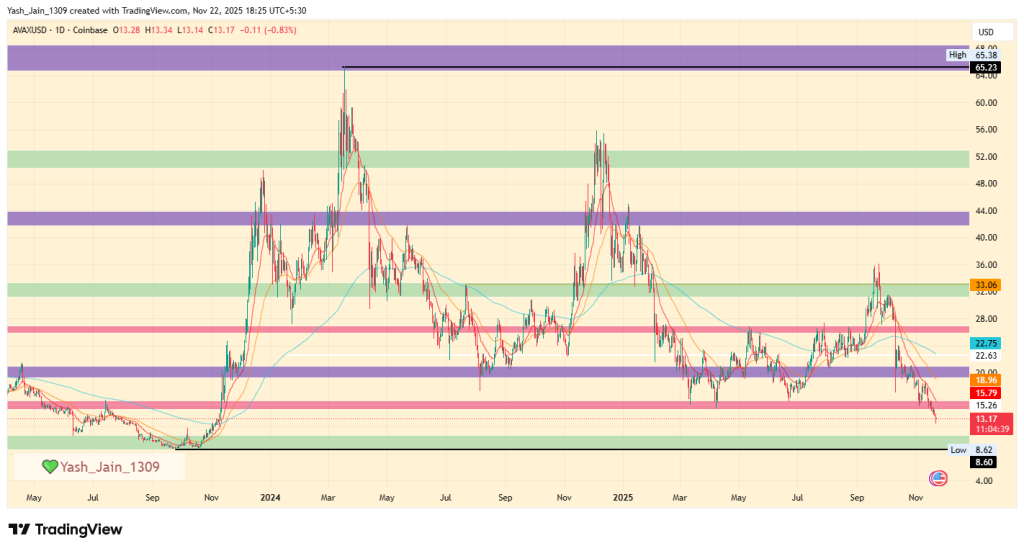Is Bitcoin's $1M Target Realistic? Institutional Demand vs. On-Chain Risks
- Bitwise projects Bitcoin could hit $1.3M by 2035, driven by institutional adoption, scarcity, and fiat devaluation. - On-chain risks include 94 wallets holding 10,000+ BTC, profit-locking resistance at $116k-$119k, and thinning liquidity. - Experts diverge: Schiff warns of fragile support from profit-taking, while Gokhman cites ETFs and ETPs as stabilizing forces. - Institutional demand faces hurdles like regulatory uncertainty and exchange outflows, complicating the $1M threshold.
The debate over Bitcoin's long-term price potential has intensified as institutional adoption accelerates and on-chain dynamics reveal both promise and peril. With Bitwise Asset Management projecting a staggering $1.3 million price tag by 2035, investors must weigh the forces driving this bullish narrative against structural risks embedded in Bitcoin's distribution and market behavior.
Institutional Demand: A Catalyst for Exponential Growth
Bitcoin's institutionalization has been a game-changer. The “2025 Institutional Investor Digital Assets Survey” reveals that 59% of institutional investors now allocate over 5% of their AUM to cryptocurrencies, with U.S. firms leading the charge. This shift is not speculative but strategic: 59% of institutions cite higher returns as the primary driver, while 49% view Bitcoin as a bet on technological innovation.
Bitwise's $1. 3M projection hinges on three pillars:
1. Scarcity Dynamics: With 94.8% of Bitcoin's 21 million supply already mined, the asset's inelastic supply creates a tailwind for price appreciation.
2. Institutional Allocation: As 1%–5% of institutional portfolios shift to Bitcoin, demand could surge exponentially. Bitwise's Total Addressable Market (TAM) model assumes Bitcoin could capture markets worth $10 trillion, including corporate treasuries, offshore wealth, and remittances.
3. Fiat Debasement: U.S. federal debt has ballooned from $23.2 trillion to $36.2 trillion in five years, fueling interest in Bitcoin as a hedge against inflation.
On-Chain Risks: Concentration and Profit-Locking
While institutional demand paints a bullish picture, on-chain data tells a more nuanced story. As of mid-2025, 94 wallets hold over 10,000 BTC each, with MicroStrategy and Satoshi Nakamoto controlling 580,250 BTC and 968,452 BTC, respectively. This concentration raises red flags:
- Whale Activity: Large holders have accumulated 24,000 BTC in recent months, tightening the circulating supply and creating a buffer against volatility.
- Profit-Locking Resistance: 95% of Bitcoin addresses are in profit, with 90% of these gains realized between $116,000 and $119,000. This creates a “resistance shelf” that could trigger selling pressure if Bitcoin approaches these levels.
- Exchange Outflows: A 4,520 BTC withdrawal on August 5, 2025, signals a shift toward long-term storage, reducing liquidity and potentially amplifying price swings.
Contrasting Views: Schiff's Bear Case vs. Gokhman's Bull Case
Peter Schiff, a vocal critic of Bitcoin, argues that institutional buying alone cannot sustain the price. “The current support is fragile,” he warns, citing a 13% drop in Bitcoin's price after a $109,000 dip. Schiff's bearish thesis hinges on the idea that profit-taking by long-term holders—3.27M BTC realized in 2025—could trigger a cascade of selling.
Conversely, Ivan Gokhman of Franklin Templeton sees institutional adoption as a stabilizing force. “ETFs are democratizing access to Bitcoin,” he notes, highlighting that 89% of large transactions ($100,000+) are now institutional. Gokhman's optimism is rooted in the growing role of regulated vehicles like ETPs, which reduce custody risks and attract conservative investors.
Market Liquidity and Volatility: A Double-Edged Sword
Bitcoin's realized volatility remains at 20%, a calm before a potential storm. While this stability supports institutional entry, it also masks underlying fragility. A 57% of institutions cite regulatory uncertainty as a top concern, and liquidity indicators suggest a thinning market:
- Exchange Balances: Declining exchange holdings (now at 1.2M BTC) mean fewer buyers to absorb sudden sell-offs.
- Correlation Shifts: Bitcoin's mild inverse correlation with the SP 500 during volatility spikes indicates it's still a standalone asset class, but this could change as macroeconomic pressures mount.
Strategic Investment Outlook
For investors, the path forward requires balancing optimism with caution:
1. Hedge Against Volatility: Diversify into stablecoins or tokenized assets to mitigate Bitcoin's 32.9% volatility.
2. Monitor On-Chain Metrics: Track whale activity and exchange outflows for early signs of accumulation or distribution.
3. Leverage Institutional Trends: Allocate to Bitcoin ETFs or ETPs to gain exposure without custody risks, while keeping a portion in cash to capitalize on potential dips.
Bitwise's $1.3M target is ambitious but not implausible if institutional adoption continues apace. However, the $1M threshold will require overcoming on-chain resistance, regulatory hurdles, and macroeconomic headwinds. As Schiff and Gokhman's debates illustrate, the future of Bitcoin hinges on whether demand can outpace the structural risks of its own success.
In the end, Bitcoin's journey to $1M will be defined by its ability to evolve from a speculative asset to a cornerstone of institutional portfolios. For now, the market remains in a delicate balancing act—between scarcity and concentration, innovation and regulation, and the promise of a digital future and the weight of its on-chain past.
Disclaimer: The content of this article solely reflects the author's opinion and does not represent the platform in any capacity. This article is not intended to serve as a reference for making investment decisions.
You may also like
Bitcoin Faces Intensifying Sell-Off as ETF Outflows and Leverage Unwinds Pressure Markets

Solana ETF Hit 18-Day Inflow Streak

Avalanche Price Prediction 2025, 2026 – 2030: Will AVAX Price Hit $100?

PEPE Price Prediction 2025, 2026 – 2030: Can Pepe Memecoin Reach 1 Cent?
